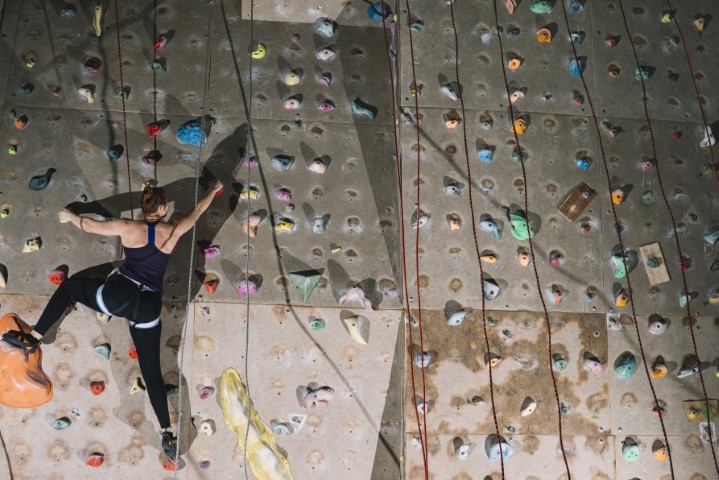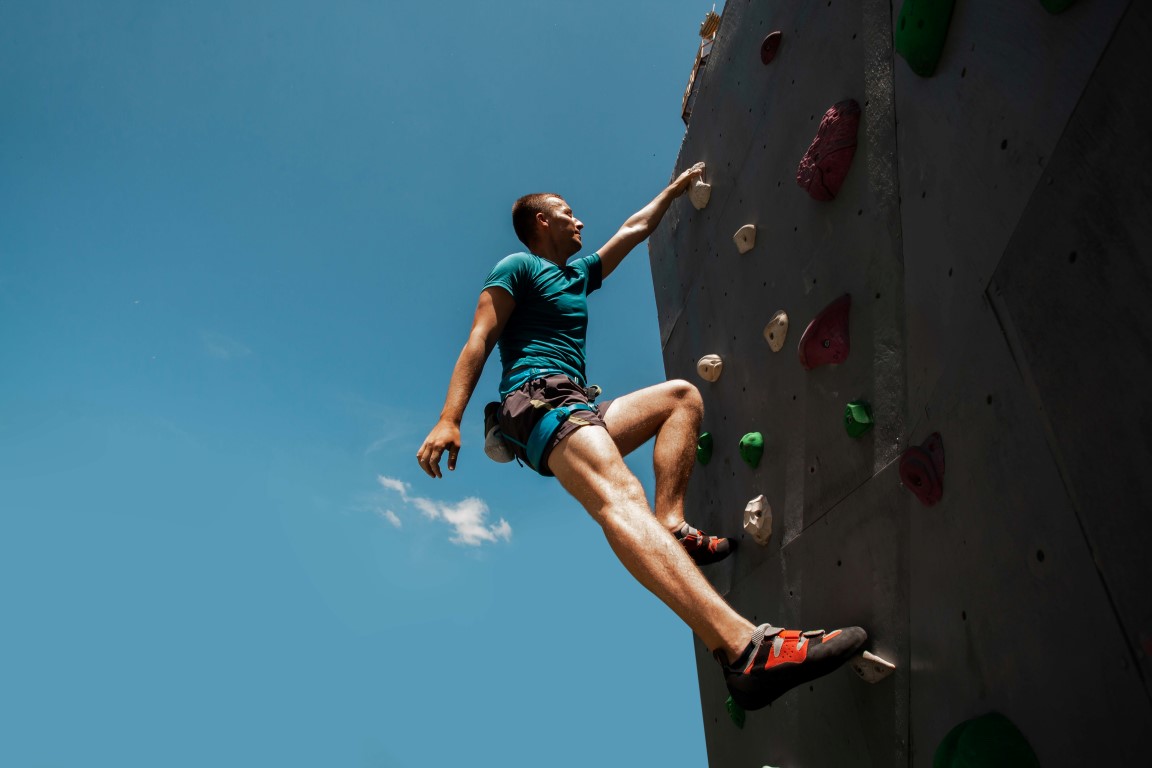In the climbing world, where strength, technique, and endurance are key to reaching the summit, a new challenge has emerged that tests climbers in a completely different way: the Speed Relay Climbing Wall. This innovative climbing format combines speed, strategy, and teamwork to push climbers to their limits, all while maintaining the precision and skill that define the sport. In this article, we’ll delve into what the best speed relay climbing walls are, how to conquer them, and why they’re rapidly becoming a must-try experience for climbers of all levels.
What is a Speed Relay Climbing Wall?
The Speed Relay Climbing Wall is a unique twist on traditional climbing. It typically features two or more climbers who race against each other to ascend the wall in a relay-style format. Each climber takes turns scaling sections of the wall, handing off the climb to their teammate once they’ve completed their portion. The clock is always ticking, and the first team to finish the climb in the shortest amount of time wins.
Unlike standard solo climbs, where the focus is placed primarily on individual performance, the Speed Relay Climbing Wall emphasizes teamwork, quick transitions, and fast-paced decision-making. This format is incredibly exciting to watch and even more thrilling to participate in, making it an appealing addition to climbing gyms and outdoor competitions worldwide.
The Importance of Speed, Strategy, and Strength
To conquer the best speed relay climbing walls, climbers need a combination of three critical factors: speed, strategy, and strength. While strength and endurance have always been essential in climbing, speed, and strategy play an even more pivotal role in this relay format.
1. Speed
As the name suggests, speed is crucial when it comes to the speed climbing wall. Each climber must work efficiently to reach the top in the shortest time possible. Speed climbing walls, often designed for maximum efficiency, allow climbers to race against the clock in a controlled, competitive environment. Speed is not just about rushing through the climb—it’s about maximizing each movement, using the right techniques, and maintaining constant momentum. This means that climbers must practice quick footwork, efficient body positioning, and fast, controlled movements to shave seconds off their time.
In addition to physical speed, climbers also need mental agility. In a high-pressure situation, climbers must remain calm and focused, resisting the temptation to panic or make hasty decisions. Fast thinking and quick decision-making are just as important as fast climbing.
2. Strategy
While speed is a key factor, strategy is what separates the best teams from the rest. A successful Speed Relay Climbing Wall performance requires a solid game plan, not just on the wall but also during the transitions between climbers.
Climbing Strategy: Each climber must know their strengths and weaknesses. If one climber excels in technical movements but isn’t as fast, they might be assigned to a more technical section of the wall, allowing the faster climber to handle the easier sections. By distributing the workload based on each climber’s strengths, teams can minimize their total climb time and reduce the chances of fatigue setting in.
Transition Strategy: The speed relay format places significant emphasis on transitions. Every second counts and a smooth handoff can make the difference between winning and losing. Climbers must communicate effectively during these transitions to ensure they’re not wasting time. Whether it’s a simple handoff of a baton or a more intricate signal to indicate when it’s time to climb, precision and communication are paramount.
Mental Strategy: The relay format requires constant awareness of the race. Climbers must adapt to the evolving situation on the wall and adjust their efforts accordingly. If a teammate is ahead, the climber must pace themselves to keep up. If the team is behind, it’s important to dig deep and push past the fatigue to make up time.
3. Strength
While speed and strategy can give a team an edge, strength remains the foundation of any climber’s success. The Speed Relay Climbing Wall is no exception. It requires a blend of both physical strength and endurance, as well as mental fortitude.
The wall is designed to challenge climbers’ grip strength, finger strength, and core stability. The more physically prepared a climber is, the less likely they are to fatigue quickly and the more efficiently they can navigate the wall.
Strength training is key in preparing for a Speed Relay Climbing Wall challenge. Climbers should focus on developing their upper body, forearms, fingers, and core to ensure they can make every move with control. Climbing holds, particularly those designed for speed, can place significant strain on the fingers, so climbers must condition their hands and forearms for these types of challenges. Endurance training is also vital, as repeated efforts over short periods can exhaust even the strongest climbers.
But strength isn’t just about sheer power—it’s also about technique. The best climbers know how to use their body efficiently, leveraging body positions, footwork, and holds to conserve energy while maximizing their movement efficiency.
The Role of Climbing Holds on Speed Relay Walls
A significant factor in speed climbing walls is the climbing holds that are used. These holds vary in shape, size, and texture and can have a direct impact on your climbing performance. On the best speed relay climbing walls, holds are often designed to encourage rapid, dynamic movement, allowing climbers to execute fluid, quick motions without sacrificing stability.
Tips to Improve Your Performance on the Speed Relay Climbing Wall
If you’re looking to conquer the best speed relay climbing walls and take your performance to the next level, here are some tips to keep in mind:
1. Master Speed Climbing Techniques
Speed climbing is a distinct style that involves maximizing efficiency and reducing wasted energy. Spend time honing your skills on speed climbing walls by practicing fast, controlled movements. Work on improving your footwork and hand placement so that every movement is calculated and deliberate.
2. Condition Your Body for Endurance
Although you won’t be climbing for hours on end, the relay format can be taxing on the body. Building endurance is crucial to sustaining your performance throughout the relay. Incorporate cardio and strength training exercises into your workout routine to build stamina and prevent burnout.
3. Work on Team Dynamics
Communication is key during a relay event. Make sure you and your teammates are in sync, not just in terms of climbing techniques, but in terms of strategy. Practice transitions and handoffs until they’re second nature, and always be clear about who’s going next and when.
4. Prepare for Mental Toughness
Relay climbing can be mentally challenging due to the pressure of competition and the fast-paced nature of the event. It’s important to stay calm under pressure, stay focused on your tasks, and adapt quickly to changes as the race progresses.
Why the Speed Relay Climbing Wall Is the Future of Climbing
The Speed Relay Climbing Wall is a thrilling new addition to the climbing world, and it’s rapidly gaining popularity for good reason. Not only does it allow climbers to push their limits in terms of speed and strategy, but it also promotes teamwork and camaraderie—something that traditional solo climbing doesn’t always emphasize.
For gyms and competition organizers, the best speed relay climbing walls provide a unique and exciting format that attracts climbers of all skill levels. It’s a crowd-pleaser that offers fast-paced action, making it perfect for spectators and participants alike.
For climbers, it offers an opportunity to develop new skills, meet like-minded individuals, and test physical and mental boundaries in a way that traditional climbing simply can’t. Whether you’re a seasoned pro or a beginner, the speed relay climbing wall challenges you to grow in ways that are both exhilarating and rewarding.
Conclusion
The Speed Relay Climbing Wall is a perfect blend of speed, strategy, and strength, pushing climbers to become faster, smarter, and stronger on the wall. Whether you’re looking to compete, train, or just have fun with friends, this new style of climbing offers a thrilling and dynamic challenge. By honing your speed, refining your strategy, and building your strength, you’ll be well on your way to conquering the best speed relay climbing walls and taking your climbing game to the next level.







